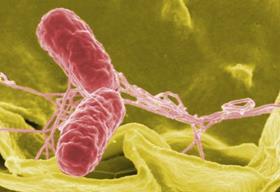
The Trust for America’s Health (TFAH) and the Robert Wood Johnson Foundation (RWJF) have released a new report, Keeping America’s Food Safe: A Blueprint for Fixing the Food Safety System at the US Department of Health and Human Services, which examines problems with the fragmented and antiquated current system and proposes ways to improve the food safety functions at the US Department of Health and Human Services (HHS) to better protect the nation’s food supply.
“Our food safety system is plagued with problems, and it’s leading to millions of Americans becoming needlessly sick each year,” said Jeff Levi, PhD, Executive Director of TFAH, in a news release. “The system is outdated and unable to effectively deal with today’s threats. Its current structure actually prevents the kind of coordinated, focused effort that Americans need more than ever and have a right to expect.”
The report calls for the immediate consolidation of food safety leadership within the Food and Drug Administration (FDA) and ultimately the creation of a separate Food Safety Administration within HHS.
According to the report, some key problems with the current structure of food safety programs at HHS include:
• Inadequate leadership, prioritization, and coordination. No FDA official whose full-time job is food safety has line authority over all food safety functions. FDA’s three major food safety components are managed separately, hampering efforts to effectively prevent disease outbreaks.
• Inadequate technologies and inspection practices. Current laws and practices are antiquated. Existing laws date back to 1906 and 1938, and policies are disproportionately focused on monitoring food after it has been produced, instead of trying to prevent and detect problems throughout the entire production process. And there is no system in place to keep inspection practices up-to-date with the constantly modernizing food production technologies and practices.
• Inadequate staffing and resources. The FDA’s Science Board found the agency is chronically underfunded. While the U.S. Government Accountability Office reports the turnover rate in FDA science staff in key areas, including food safety, is twice that of other government agencies.
• Inadequate inspection of imports. Only one percent of imported foods are currently inspected, even though approximately 60 percent of fresh fruits and vegetables and 75 percent of seafood Americans consume is imported.
The Keeping America’s Food Safe report recommends:
• Increasing and aligning resources with the highest-risk threats;
• Modernizing the mandate and legal authority of the HHS Secretary to prevent illness, which would include enforcing the duty of food companies to implement modern preventive controls and meet government-established food safety performance standards;
• Immediately establishing a Deputy Commissioner at FDA with line authority over all food safety programs, including the Center for Food Safety and Applied Nutrition, the Center for Veterinary Medicine, and the food functions of the Office of Regulatory Affairs, as an interim step toward creating a Food Safety Administration; and
• Working through Congress toward the creation of a Food Safety Administration within HHS, strategically aligning and elevating the food safety functions currently housed at FDA and better coordinating regulation policies and practices with the surveillance and detection of outbreak functions at CDC and with food safety agencies at the state and local level.



